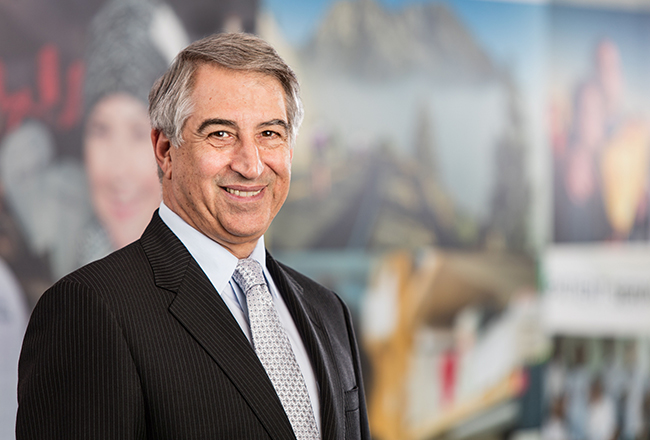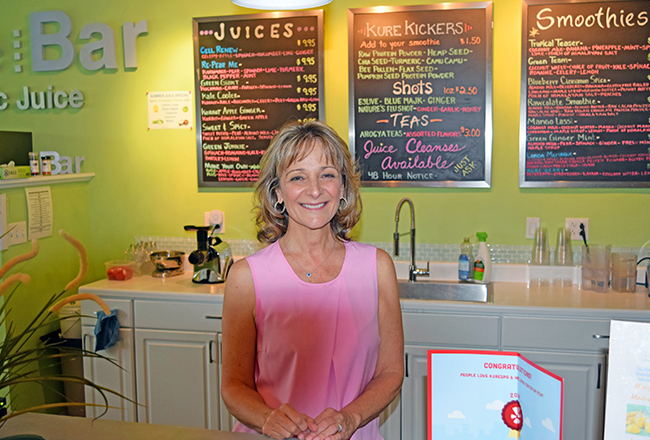
As president and CEO of The Leukemia & Lymphoma Society, Louis J. DeGennaro is in charge of leading the operations of the world”™s largest voluntary health agency dedicated to fighting blood cancers. DeGennaro joined the Rye Brook nonprofit as chief scientific officer in 2005 and was later named chief mission officer in 2009, responsible for leading all of the organization”™s research, patient education and support, public policy and advocacy. In 2014, he was selected to be the organization”™s next CEO. During his tenure at the nonprofit, DeGennaro pioneered the organization”™s venture philanthropy approach to accelerating new treatments to patients through partnerships with the biotechnology industry. DeGennaro received his doctorate in biochemistry from the University of California at San Francisco and completed his post-doctoral research at the Yale University School of Medicine. Prior to joining The Leukemia & Lymphoma Society, he was a research group leader at Max Planck Institute in Munich, an associate professor of neurology and cell biology at University of Massachusetts Medical School and senior director of molecular genetics at pharmaceutical company Wyeth. Here, he chats with Business Journal reporter Aleesia Forni about his background, his transition to CEO and his passion for science and patient care.
You received your doctorate in biochemistry from the University of California at San Francisco. Why did that field interest you?
“I decided on a science career during a high school biology lecture. The teacher described energy-generating pathway in cells (the Krebs cycle), and my fascination with that pathway and exquisite control mechanisms convinced me to pursue science. I didn”™t want to do science for the sake of science, rather, I wanted to pursue therapies for patients. I went into neuroscience and studied how the brain develops and then deteriorates, working at the Max Planck Institute in Germany, then on the faculty at the UMass Medical Center. I wanted to take what was developed in the lab and translate that to use for patients. Those experiences motivated me to leave academia and go to a large pharmaceutical company.”
I know you joined The Leukemia & Lymphoma Society more than a decade ago. What attracted you to the position and to the nonprofit?
“At The Leukemia & Lymphoma Society, I have found the perfect intersection of science and patient care, overseeing the funding of cutting-edge research, supporting patients and engaging in patient advocacy work. Given my earlier career experience, I was able to bring to LLS an understanding of how academic science works, as well as an understanding of drug discovery and development. When your goal is new therapies for patients, it”™s important to understand both aspects.
As CEO of a patient advocacy organization, I feel closer to delivering therapies to patients than I did at the pharmaceutical company. Because of The Leukemia & Lymphoma Society”™s role in funding cutting-edge research, we are having a significant impact on patients, as we”™re in a position to drive new therapies quickly. The Leukemia & Lymphoma Society has invested more than $1.2 billion in research since our founding almost 70 years ago.”
What is the mission of The Leukemia & Lymphoma Society and why is that mission so important?
“Our mission is to cure leukemia, lymphoma, Hodgkin”™s disease and myeloma, and improve the quality of life of patients and their families. It”™s never a good time to get cancer, but it”™s a phenomenal time to be fighting it. What excites all of us at The Leukemia & Lymphoma Society is that the advances we”™re making (with respect to) blood cancers are now having an impact on patients with other cancers and chronic diseases. Cutting-edge approaches to cancer ”” immunotherapy and precision medicine ”” were started in the blood cancers, and we had the vision to fund many of these approaches to research and treatment when others did not.
Recently, I was pleasantly surprised to see an article in the (medical) journal Blood that had the word ”˜cure”™ in the title. Never in my 30-year scientific career did I imagine a scholarly write-up about cancer addressing real cures. There is great optimism that we are on the cusp of curing cancers.”
Were there any aspects of your job as CEO that surprised you when you took over the role in 2014?
“I learned it”™s actually more difficult to manage in the nonprofit arena than the for-profit world. In for-profit, if a CEO says ”˜go left”™ everyone goes left. The Leukemia & Lymphoma Society is a voluntary health agency with tens of thousands of volunteers involved in fundraising events. It”™s not simply staff that has to buy into a strategy and plan, you have to bring along a large constituency, most of whom have no reporting authority to you. It”™s a significant challenge that you can”™t train for in for-profits. You have to recognize this is a constituency you need to address and then engage them in constant communication. Volunteers are tied to us because of their connection to the cause, but we are asking them to volunteer for free and give their time, talent and money. We owe them a high level of communication and an opportunity to weigh in on our strategy
and direction.
I also learned fundraising is hard work. Being on the mission side, I”™m used to stewarding the use of dollars.”
You recently unveiled a new brand platform. Can you talk a bit about that?
“Our new platform, ”˜Beating Cancer Is In Our Blood,”™ demonstrates that The Leukemia & Lymphoma Society is at the forefront of the fight to cure cancers. The foundation of the platform is the fact that approaches to new research and drugs and treatments developed for blood cancers are helping people affected by many different types of cancer. The Leukemia & Lymphoma Society-funded breakthroughs in blood cancer research are now saving lives and being tested in clinical trials for other cancers, such as brain, breast, kidney, liver, lung, ovarian, pancreatic and prostate cancer, as well as arthritis and diabetes. Our work has helped millions impacted by cancer.
Breakthroughs in blood cancer are occurring at an ever-increasing rate. Just last year, we saw 18 new blood cancer approvals by the U.S. Food & Drug Administration. The Leukemia & Lymphoma Society supported 15 of them, including CAR T-cell immunotherapy, which has been a breakthrough in blood cancer therapy. The Leukemia & Lymphoma Society has invested more than $40 million in CAR-T over the past two decades, and CAR-T is now being tested for other blood cancers and solid tumors.
Other lifesaving discoveries, including immunotherapies, genomics and precision medicine, emerged from researching blood cells, as well. The Leukemia & Lymphoma society is at the forefront of the fight to cure cancer.”
What does a typical day look like for you?
“When I”™m not traveling for business, I arrive at the office around 6 a.m. I spend an hour in the gym and get to my desk a little after 7. The rest of the day can be quite varied, from talking with patients and caregivers, to scientific and medical discussions with staff and advisers, to talking with donors and LLS volunteers. Every day I find that I have a reason to cry (usually over a bad outcome for a patient), a reason to smile (a thank you note from someone we”™ve helped, or a new cancer breakthrough) and everyday I learn something new. It”™s really energizing.”
What”™s the last book you read?
“The last book I read was ”˜Engine of Impact”™ by Kim Starkey Jonker and William F. Meehan III that describes the essentials of strategic management in the nonprofit sector.”
And your favorite book?
“”˜Five Days in London, May 1940”™ by John Lukacs. Churchill had to influence people he didn”™t have reporting authority over to make sure British parliament didn”™t take the appeasement route with Hitler. He navigated difficult waters to get the government to take a stand and those five days were a seminal turning point in WW II. There”™s something to be learned there
for managers.”
Any words of advice for someone interested in the biotechnology field?
“Hone your skills and abilities in collaboration and partnership. Drug discovery and development is a team sport. It takes expertise in science, medicine and regulatory affairs, like working with the Food and Drug Administration, project management and the commercial aspects of the business. No matter what your expertise, you need to be able to work as part of a team to be successful.”
Note: Portions of the interview were edited and condensed for clarity.






















